Triangles of light and shadow spread down the side of the ancient Pyramid of Kukulcan as the sun sets over Chichen Itza. A giant serpent appears to be descending from the heavens. It is the fall Equinox and the god Kukulcan is returning to earth. This is the spectacle that visitors to the Mayan metropolis of Chichen Itza in eastern Yucatan will witness on September 22 as they explore this UNESCO World Heritage Site. However, everywhere you go in the Yucatan and southeast Mexico Mayan masterpieces await in ancient cities, large and small. Why not explore some of them on your next visit?
Yucatan
Uxmal
An hour’s drive south of Mérida, Uxmal is one of the loveliest ancient cities in the Maya World. During the Late Classic period (A.D. 600-900), it was a regional capital, controlling southwest Yucatán and a chain of smaller cities referred to as the Puuc Route: Kabah, Sayil, Xlapak and Labná.
Apart from location, these sites share a unique architectural and artistic style called Puuc. In recognition of their outstanding cultural worth, UNESCO declared them a World Heritage area in 1996.
Highlights at Uxmal are the Magician’s Pyramid, the Nuns’ Quadrangle, a gracious courtyard surrounded by four palace-like buildings with magnificent friezes and the impressive Palace of the Governor on a mound and platform overlooking the site. Other buildings of note are the Temple of the Birds, the Great Pyramid, The House of the Turtles and El Palomar.
Puuc Route
Thirty minutes south of Uxmal, Kabah is the second largest site in the Puuc hills and was one of its vassals. It is famous for the Codz Poop, or the Palace of the Masks, a name that does justice to its magnificent façade consisting of 250 masks depicting Chaac, the Mayan rain god.
Seven kilometers south of Kabah is Sayil, which means “place of the ants” in Maya. The principal building on site is the three-tiered Palace, a long building containing 94 chambers, porticos, columns, Chaac masks and sculptures of the descending or diving god, also seen in Tulum on the Caribbean coast.
The smallest of the Puuc Route sites, Xlapak is best known for the Palace, a tiny but richly carved building in a forest clearing.
Ten kilometers to the east of Sayil, Labna is famous for its huge arch, which was the gateway between the ceremonial plaza and a courtyard surrounded by palaces in ancient times. The arch has an open work roof comb and its finely carved façade features Chaac masks, Mayan huts, nobles and geometric motifs.
Mayapan
Located 30 miles south of Merida, Mayapan was the last capital of the Maya in the Yucatan. Founded around A.D. 1250 during the post-Classic period of Mayan civilization, it was abandoned in 1450. Several of Mayapan’s most important buildings show similarities to those at Chichen Itza, leading archaeologists to speculate that it was settled by Maya from Chichen, which was abandoned around 1250.
Ek Balam
A 20-minute drive to the north of Valladolid is the ancient city of Ek Balam, which means “black jaguar or star jaguar” in Maya. The city flourished between A.D. 250-1200 and its crowning glory is the façade on the upper level of the Acropolis, the principal building, which features the magnificent stucco figure of an ancient lord thought to be the first ruler of the city. The figure’s ornate feathered headdress resembles wings and has led many people to refer to him as “el angel” or the angel.
Quintana Roo
Tulum
Crowning a cliff overlooking the Caribbean, Tulum is one of the Maya World’s most spectacular sites. “Tulum” means “wall” in Maya, a reference to the sturdy stone barrier that protects it on three sides, the fourth being the sea, but in ancient times the city was known as Zama or Dawn.
An inscription on a stela or standing stone found at the site reveals that Tulum was inhabited as far back as A.D. 564 although it reached its peak during the Post-Classic period (1250–1521) as a port on the sea and land trade routes.
The principal building at Tulum is a temple known as El Castillo; other important groupings are the Temple of the Descending God, Temple of the Frescos and the House of the Columns.
Coba
From Tulum on the Riviera Maya coast, head inland to the ancient city of Coba (25 miles/41 km from the coast), one of the Maya World’s largest archaeological sites.
Coba means “waters ruffled by the wind” in Maya and the pyramids and temples at this jungle site are clustered around four shallow lakes. The city reached its peak during the Mayan Classic period, A.D. 250-900, when it was an important trade center. Archaeologists believe that it may have had links with Tikal in Guatemala. The most recent discovery at the site is the identification of the ancient dynasty that dominated Coba and the names of 14 rulers through the study of hieroglyphic inscriptions carved on stelae and wall tablets.
The principal buildings or groups at Coba are Nohoch Mul, at 42 meters, the tallest pyramid in the northern Yucatán, the Cobá group, La Iglesia (another pyramid), Las Pinturas, the Ball Court, Xaibe and the Macanxoc group which has nine circular altars and eight stelae.
Cobá is also famous for the sacbes or Mayan roads that radiate from the heart of the city. The longest sacbe in the Maya World links the city with the site of Yaxuná, near Chichén Itzá and is 101 km long.
Kohunlich
The most famous archaeological site in southern Quintana Roo, 60 kilometers to the west of Chetumal via Highway 186, Kohunlich was first reported in 1912 by Raymond Merwin. The name “Kohunlich” is derived from the English words “cohune,” a native palm tree, and “ridge.”
Excavation work has revealed that the city was founded around 200 B.C. and reached its peak during the Classic period of Mayan history (A.D. 200 – 1000). Building work appears to have ceased around 1200.
Kohunlich is famous for the huge stucco masks that flank the staircase of the Temple of the Masks. Archaeologists believe that they depict the city’s rulers who chose to identify themselves with the sun god, Kinich Ahau, to legitimize their rule. Other important groups of buildings are the Acropolis, the Courtyard of the Stelae, the Palace of the King, Merwin Plaza and the elite residential areas known as the 27 Steps Complex and Pixa’an.
Dzibanche
Located in the jungle 81 kilometers northwest of Chetumal via Highway 186, Dzibanche is an ancient city that is still revealing its secrets. Discovered in 1927 by Thomas Gann, Dzibanche means “writing on wood” in Maya, a reference to the calendar inscriptions found on the carved lintel of zapote wood above the doorway to Temple VI.
Experts believe that Dzibanche was the largest and most important city in southern Quintana Roo in ancient times and may have been involved in a power struggle with other city-states in the region such as Calakmul in Campeche. The city reached its peak between A.D. 300 and 1200.
The most important groups of buildings are the Temple of the Lintels; the Gann Plaza, which is flanked by the Temples of the Cormorants, Captives and Toucans; Xibalba Plaza, the site of the Temple of the Owl and the North and South Palaces.
An outlying district of the city, Kinichna (“House of the Sun” in Maya) is located about two kilometers north of Dzibanche and is dominated by a temple called the Acropolis
Campeche
Calakmul
Deep in the jungle of the Calakmul Biosphere Reserve in southern Campeche, close to the Guatemalan border, the ancient city of Calakmul was a major Maya power in the Classic period of Maya history. Its rulers had a bitter rivalry with the city of Tikal and were at war with it for almost a century. The study of hieroglyphic inscriptions carved on Calakmul’s many stelae or standing stones has revealed events including battles, victories, alliances and successions.
Climb the twin pyramids for panoramic views of the forest with the Danta Pyramid at the Guatemalan site of El Mirador visible in the distance.
The huge site of Calakmul is also famous for the jade masks found in the tombs of ancient rulers buried deep in temples and palaces.
Calakmul is a UNESCO World Heritage site and the surrounding jungle is a haven for wildlife, including spider and howler monkeys, deer, jaguar and puma, ocellated turkey, toucans and the rare king vulture.
Due to its remote location, guided tours are the best way to explore Calakmul.
Chiapas
Palenque
Nestled in the forest-shrouded foothills of the northern mountains of Chiapas, the white city of Palenque is one of the most beautiful ancient cities in the Maya World.
A major power during the Classic period of Maya history, it reached its peak during the reign of its most famous ruler Pakal (AD 615-683) and his heir Chan B’ahlum. Carved wall panels, bas-reliefs, masks and memorial tablets have provided archaeologists with a wealth of information about their deeds, the city’s history and the Maya universe.
In 1952, archaeologists working at the site announced a major discovery, the tomb of Pakal deep in the heart of the Temple of Inscriptions. The carved lid of the sarcophagus can still be viewed today in the burial chamber. In 1994, another amazing find made the headlines, the tomb of a woman with a burial mask and a hoard of jade covered in cinnabar dust in Temple XIII, next to the Temple of Inscriptions. The Red Queen as she is known is thought to be Tz’ak-b’u Ajaw, the wife of Pakal.
Other important buildings in Palenque include the Palace with its distinctive tower and a courtyard with tablets depicting captive rulers, the Temple of the Cross, Temple of the Foliated Cross, Temple of the Sun, Temple of the Skull and Temple of the Count.
Jungle paths take visitors through the archaeological site and the trees echo with the cries of howler monkeys and the squawks of parrots.
Flights are available to Palenque and to Villahermosa from Cancun. The nearby village of Palenque is a good base for exploring the area and sites of interest such as Agua Azul and Misol Ha waterfalls and the archaeological sites of Yaxchilan and Bonampak in the Lacandon Jungle.

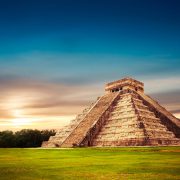
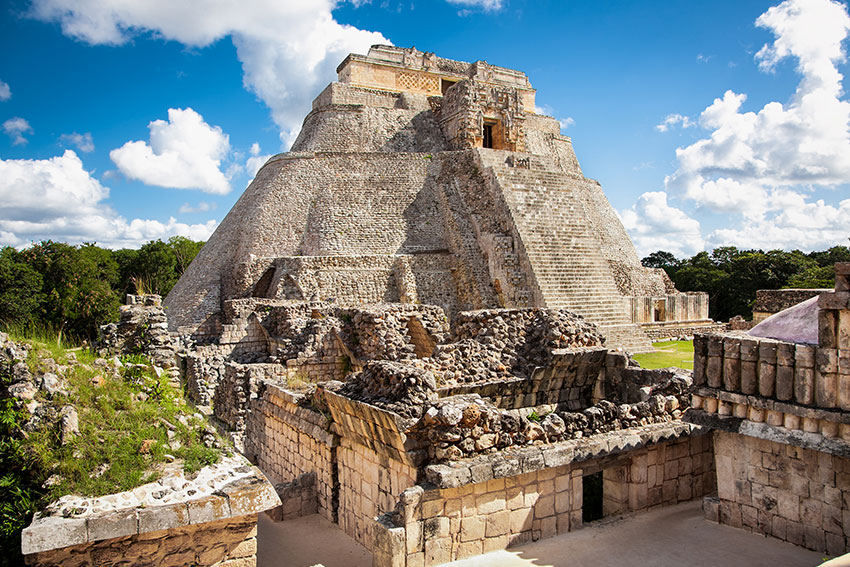
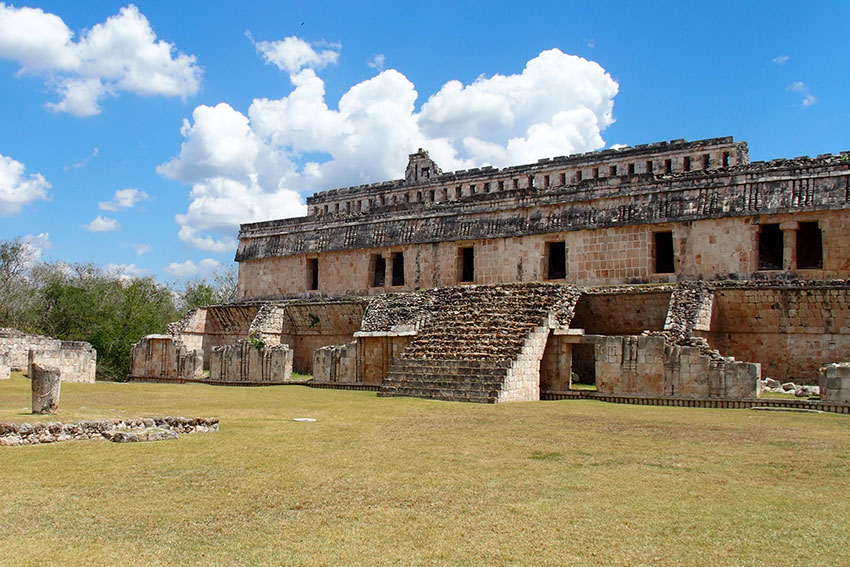
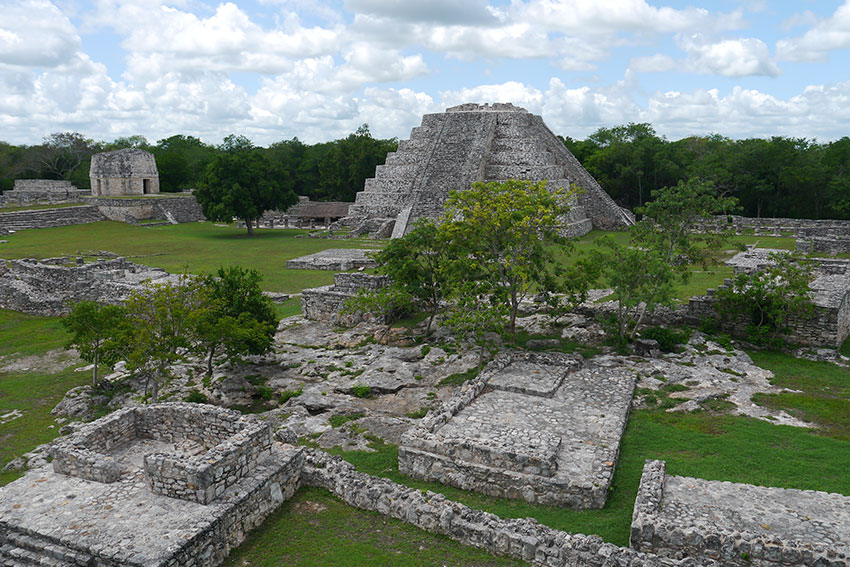
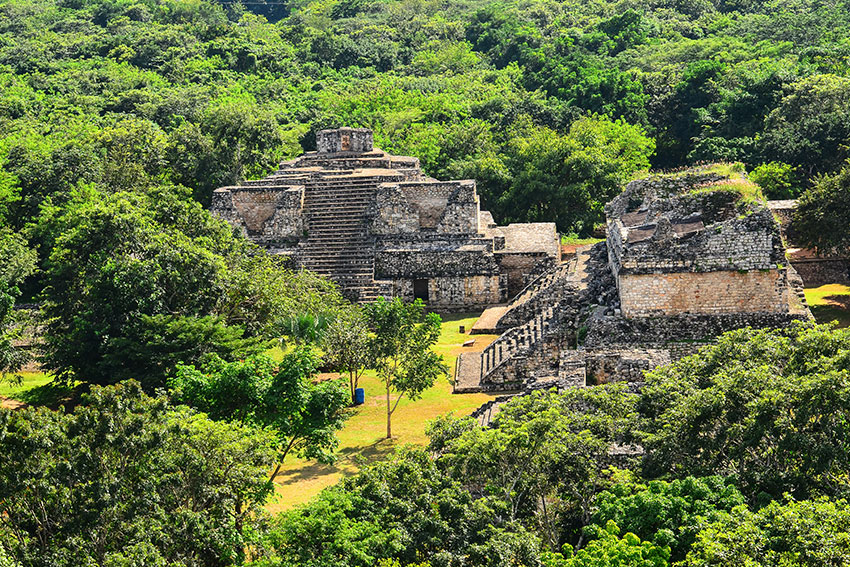
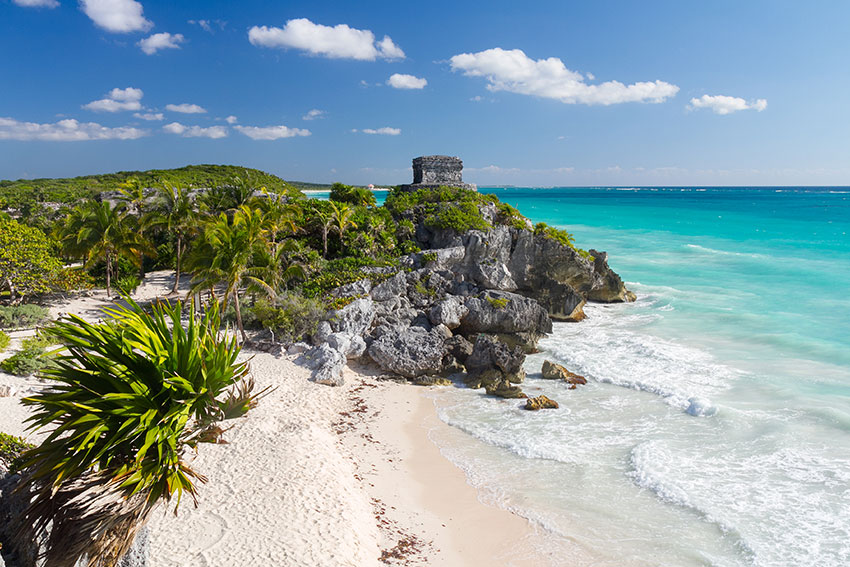
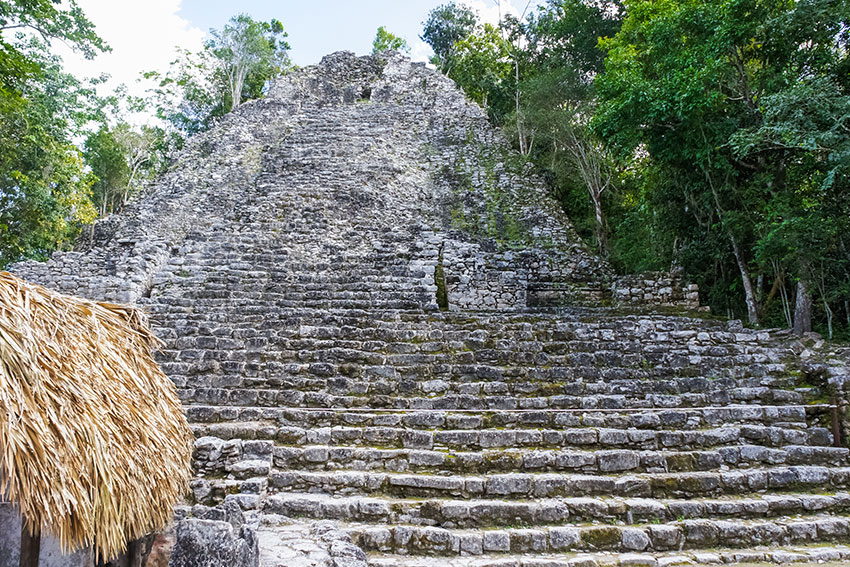
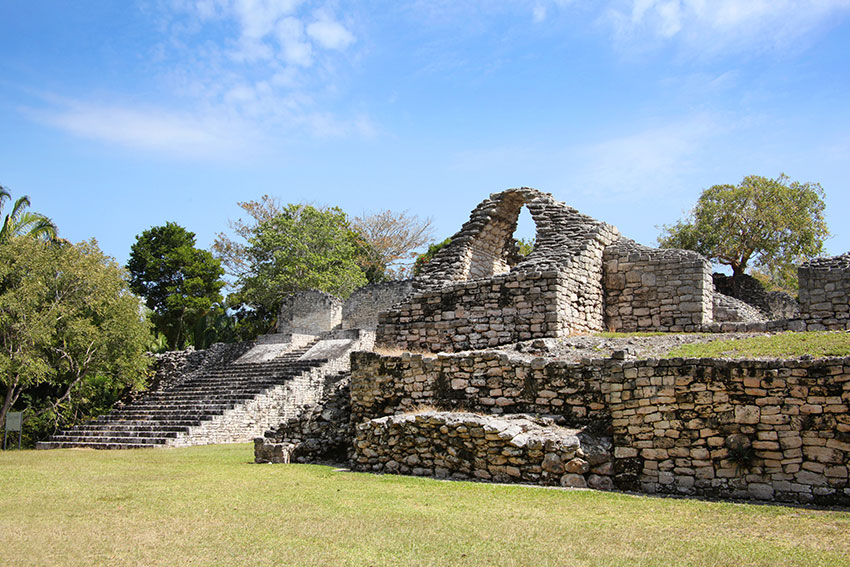

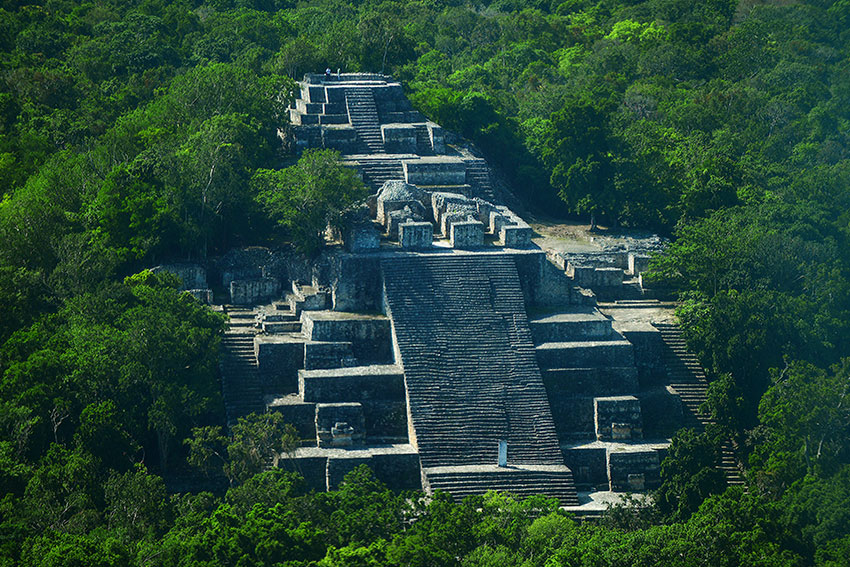
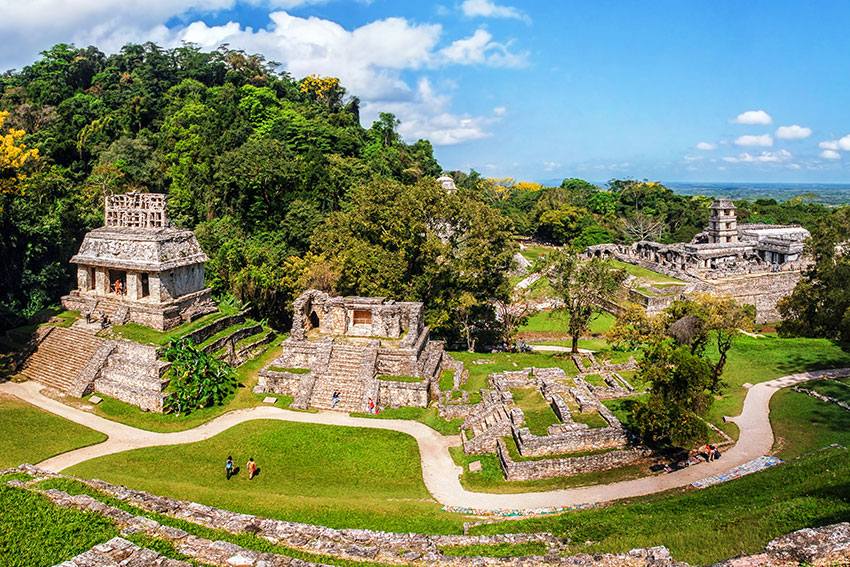



Leave a Reply
Want to join the discussion?Feel free to contribute!